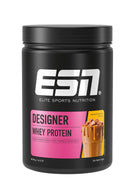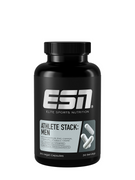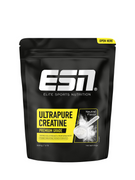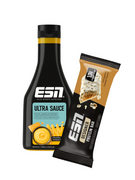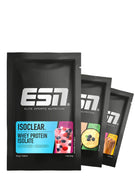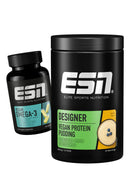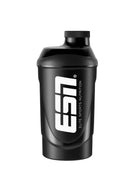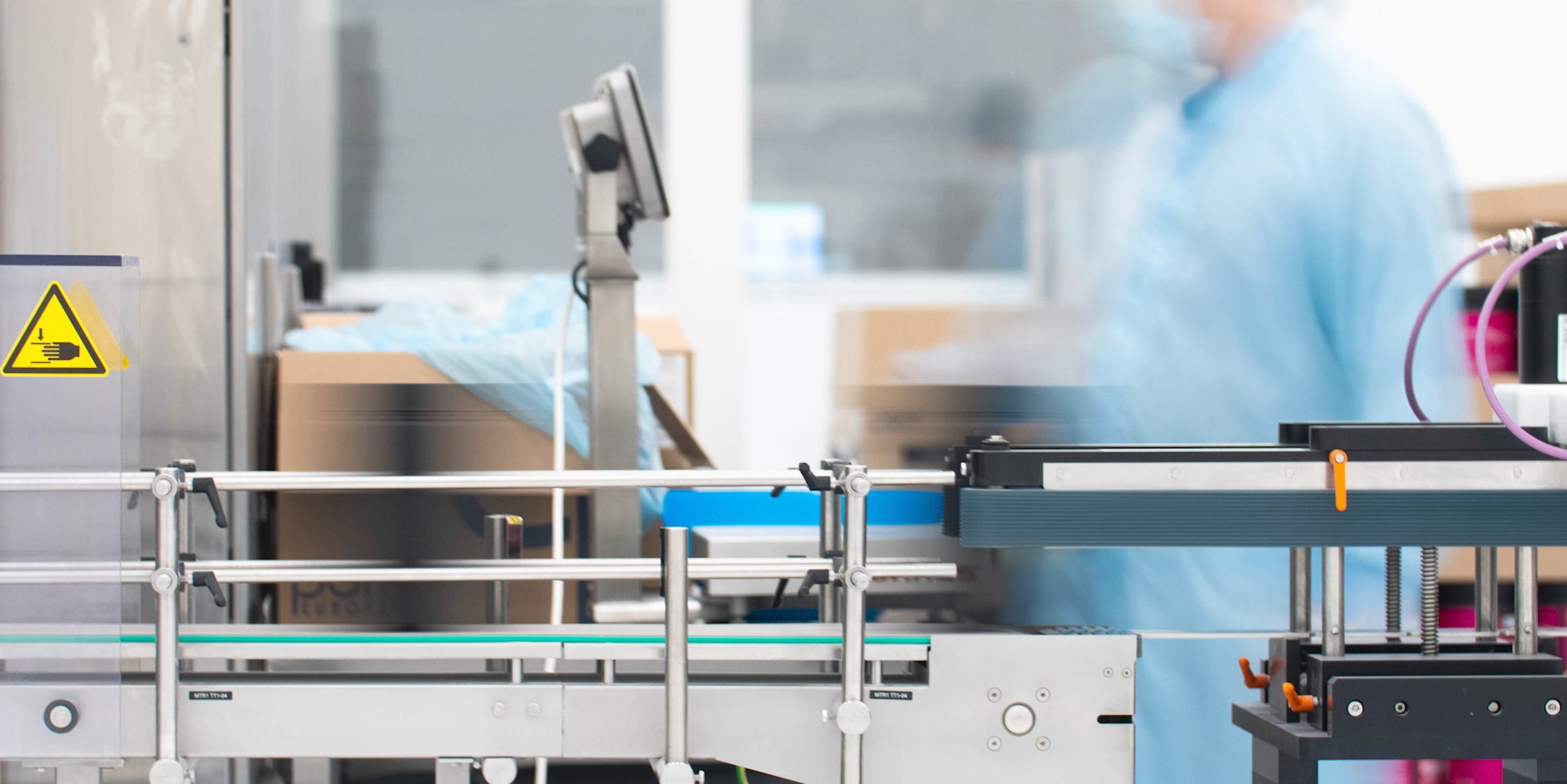Wie wird Proteinpulver hergestellt?
Bei der Frage wie Eiweißpulver hergestellt wird, kommt es darauf an, um welches Proteinpulver es geht. Für Whey Proteinpulver wird z. B. Molke über Mikrofiltration und Trocknungsverfahren so behandelt, dass am Ende das Pulver entsteht, wie du es für deine Shakes und Co. kennst.
Einfach erklärt, ist Whey Proteinpulver ein Nebenprodukt der Käseherstellung. Molkenprotein wird ursprünglich aus der Milch von Kühen gewonnen, die von Natur aus zwei Hauptproteinarten, Casein und Whey, in einem Verhältnis von 80 bzw. 20 Prozent enthalten. Bei der Käseherstellung wird die Milch erhitzt, um unerwünschte Bakterien abzutöten. Durch den Temperaturanstieg wird die Milch in Quark und flüssige Molke aufgespalten.
Nach der Trennung wird der Quark abgeseiht, der Rest ist flüssige Molke. In ihrem ursprünglichen flüssigen Zustand ist Molke eine Mischung aus hauptsächlich Wasser mit etwas Eiweiß, Fett, Kohlenhydraten und Laktose. Für die weitere Whey Protein Herstellung wird die Molke in einem mehrstufigen Verfahren gefiltert und getrocknet.
Schritt für Schritt: Proteinpulver-Herstellungsverfahren einfach erklärt
Whey Proteinpulver – ganz gleich, ob Konzentrat, Isolat oder Hydrolysat – gehört zu den beliebtesten Eiweißpulvern auf dem Markt, denn es zeichnet sich durch einen besonders hohen Proteingehalt und eine hohe Wertigkeit aus. Whey Protein versorgt deinen Körper mit allen wichtigen Aminosäuren und hilft dir deine Ziele zu erreichen.
Um die Herstellung von Eiweißpulver zu veranschaulichen, zeigen wir dir Schritt für Schritt, wie Whey Proteinpulver hergestellt wird.
1. Rohstoff: Milch
Molkenprotein ist ein tierisches Produkt, das in der Milchwirtschaft gewonnen wird. Für die Herstellung unserer Proteinpulver achten wir auf bestmögliche Qualität der ursprünglichen Milch bei den Rohstoff-Lieferanten – und das schmeckt man auch. In ihrem Rohzustand enthält die Milch etwa fünf Prozent Laktose, vier Prozent Fett und 3,5 Prozent Eiweiß.
2. Transport
Der nächste Schritt bei der Whey Protein Herstellung ist der Weitertransport unseres Rohstoffs. Dazu wird die gekühlte Milch in großen Kühltanks zur nächstgelegenen Fabrik gebracht. Solche Tanks hast du bestimmt schon mal auf den Straßen gesehen. Wenn nicht, achte mal darauf!
3. Pasteurisierung
Frisch gemolken, enthält Milch Bakterien, die für den Menschen schädlich sein können. Sie muss daher pasteurisiert werden, bevor sie zum Verzehr geeignet ist. Um Krankheitserreger abzutöten, wird die Milch kurz auf hohe Temperaturen erhitzt und dann schnell abgekühlt. Die wichtigen Nährstoffe in der Milch werden durch die Hitze nicht beeinträchtigt, nur die Bakterien werden während des Prozesses abgetötet. Nach der Pasteurisierung besteht das in der Milch enthaltene Protein nun zu 20 Prozent aus Molkenprotein und zu 80 Prozent aus Casein Protein.
4. Trennung der Milchproteine
Der pasteurisierten Milch werden jetzt Enzyme zugesetzt, welche die Struktur der Casein Zellen verändern und die Milch zum Gerinnen bringen. Der Hauptteil der Milch verwandelt sich in Quark. Dieser feste Teil der Milch wird als Ausgangsprodukt für eine Vielzahl von Käsesorten verwendet. Der verbleibende Teil ist die flüssige Molke, die nun für die Herstellung von Whey Protein verwendet wird.
5. Mikrofiltration
Wie du sicher weißt, gibt es unterschiedliche Proteinpulver mit Whey – darunter Whey Protein Konzentrat, Isolat und Hydrolysat. Für die Herstellung dieser Eiweißpulver werden unterschiedliche Filtrationsverfahren verwendet. Die einzelnen Proteinpulversorten unterscheiden sich im Wesentlichen durch ihren Proteingehalt.
Für die Herstellung von Whey Protein Konzentrat wird das flüssige Whey gefiltert, damit es einen hohen Proteingehalt aufweist. In diesem Schritt wird die Molke weiter gereinigt, um Fette, Kohlenhydrate und Wasser zu entfernen. Dabei wird die flüssige Molke durch eine Reihe von Mikrofiltern gegeben. Durch dieses Verfahren werden der flüssigen Molke die meisten Fette und Laktose entzogen. Das daraus resultierende Produkt ist die Grundlage für das Whey Protein Konzentrat.
6. Ultrafiltration für Whey Protein Isolat
Whey Protein Konzentrat wird ultrafiltriert, um Whey Protein Isolat herzustellen. Dank einer sogenannten Ultrafiltrationsmembran werden praktisch das gesamte Fett und die Laktose aus der Molke entfernt. Bei Whey Protein Konzentrat variiert der Proteingehalt zwischen 35 bis 85 Prozent in der Trockenmasse.[¹] Bei Whey Protein Isolat liegt der Anteil dagegen bei circa 90 Prozent[²] und bei Hydrolysat noch etwas höher, was aber den erheblichen Mehrpreis nicht rechtfertigt.[³] Obwohl das Whey hierbei so stark filtriert wird, enthält es dennoch alle wichtigen Aminosäuren, welche die hohe biologische Wertigkeit von Whey Proteinpulvern ausmachen. Allerdings überzeugt der Geschmack vom Whey Protein Hydrolysat die meisten Menschen nicht besonders, ganz im Gegenteil zum Whey Protein Konzentrat oder Isolat.
7. Trocknung
Die proteinreiche flüssige Molke wird einer speziellen Trocknung ausgesetzt. Unter dem Einfluss von heißer und kalter Luft wird dabei das Wasser schnell entzogen. Diese sogenannte „Sprühtrocknung“ sorgt auch dafür, dass die Molke ihren Nährwert nicht verliert und das Eiweiß nicht denaturiert wird. Nachdem das im Whey Protein Konzentrat enthaltene Wasser entfernt worden ist, wird das dabei entstehende Produkt in Pulver- oder Flockenform weiterverarbeitet.
8. Qualitätsprüfung
Hochwertige Qualität und erstklassige biologische Wertigkeit stehen bei unserer Eiweißpulver Herstellung an oberster Stelle. Deshalb wird auch schon die Qualität des geschmacksneutralen Whey Proteinpulvers geprüft. Dabei wird der Proteingehalt streng gemessen, um sicherzustellen, dass das Endprodukt die gewünschte Menge an Eiweiß und allen essenziellen Aminosäuren enthält.
9. Die perfekte Zusammensetzung
Dieser Schritt im Herstellungsverfahren bringt den Geschmack in Spiel: Die reinen Whey Protein Rohstoffe werden vom Rohstoffhersteller verpackt und in unsere eigene Produktion transportiert, wo sie unter anderem mit eigens entwickelten Aromen und weiteren Zutaten angereichert und „veredelt“ werden. Und das Ergebnis? Unsere beliebtesten Proteinpulver in vielen leckeren Geschmacksrichtungen.
10. Verpackung
Der letzte Schritt, bevor du das Proteinpulver kaufen kannst, beginnt: Das aromatisierte Whey Proteinpulver wird verpackt und versiegelt. Abschließend wird von jeder Charge eine Probe an ein Labor geschickt, das den Proteingehalt und die Menge an Fetten, Kohlenhydraten etc. genau misst. So stellen wir sicher, dass du ein Eiweißpulver mit der bestmöglichen Qualität erhältst.
Gut zu wissen: So viel Milch braucht man für die Herstellung von Whey Proteinpulver
Hättest du das gewusst? Für die Herstellung von einem Kilogramm Whey Proteinpulver werden etwa 200 Liter Milch benötigt. Im Allgemeinen ergeben 100 Liter Milch etwa zwölf Kilogramm Käse oder etwa drei Kilogramm Casein.
Wie wird pflanzliches Eiweißpulver hergestellt?
Fazit: Die Herstellung von Proteinpulvern sagt viel über deren Qualität aus
Die Proteinpulver Herstellung verlangt eine Menge Aufwand. Bis aus der reinen Milch z. B. ein Whey Proteinpulver wird, hat sie einige Produktionsschritte hinter sich gebracht. Je reiner der Proteingehalt und je höher die Qualität eines Eiweißpulver ist, desto eher kannst du auch davon ausgehen, dass besonders viel Aufwand für die Herstellung betrieben wurde.
Das ist auch genau der Grund, warum du bei verdächtig günstigen Angeboten von Proteinpulvern vorsichtig sein solltest. Ein gutes Proteinpulver hat seinen Preis, dafür erhältst du aber auch ein Produkt mit einwandfreier, biologischer Wertigkeit, hervorragender Qualität und hohem Proteinanteil – überzeuge dich selbst und teste unser ESN Designer Whey Proteinpulver!
Weitere Artikel zum Thema Proteinpulver
- Bekommt man von Proteinpulver Pickel?
- Whey Protein zum Backen
- Protein Shake vor oder nach dem Training nehmen
Quellen:
[1] https://www.sciencedirect.com/topics/agricultural-and-biological-sciences/whey-protein-concentrate
[2] https://www.sciencedirect.com/topics/agricultural-and-biological-sciences/whey-protein-isolate
[3] https://nutritionandmetabolism.biomedcentral.com/articles/10.1186/1743-7075-6-38
